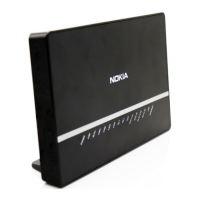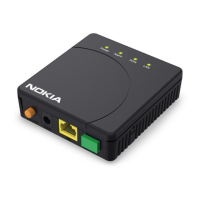"FD 100/320Gbps NT and FX NT IHub System
Basics, Management and OAM Guide"
Events and Logs
Issue: 10 3HH-11982-AAAA-TQZZA 111
Table 109 Log Entry Field Descriptions
6.4.6 Default System Log
Log IDs 99 and 100 are created by the agent.
• Log 99 is a pre-configured memory-based log which captures log messages from
the main event source (not security, debug, etc.).
• Log 100 is a pre-configured memory-based log which captures log messages
from the main event source (not security, debug, etc.) with a severity level of major
and above (as determined by the filter).
• Neither Log 99 nor Log 100 can be deleted, because they are default system logs,
though they can be temporarily cleared and then restored after system restart.
The following displays the default log configuration:
ALA-1>configure>log# info detail
#------------------------------------------
echo "Log Configuration "
#------------------------------------------
...
Label Description
nnnn The log entry sequence number.
YYYY/MM/DD The UTC date stamp for the log entry.
• YYYY — Year
• MM — Month
• DD — Date
HH:MM:SS.SS The UTC time stamp for the event.
• HH — Hours (24 hour format)
• MM — Minutes
• SS.SS — Seconds
<severity> The severity level name of the event.
• CLEARED — A cleared event (severity number 1).
• INFO — An indeterminate/informational severity event (severity level
2).
• CRITICAL — A critical severity event (severity level 3).
• MAJOR — A major severity event (severity level 4).
• MINOR — A minor severity event (severity level 5).
• WARNING — A warning severity event (severity 6).
<application> The application generating the log message.
<event_id> The application’s event ID number for the event.
<router> The router name representing the VRF-ID that generated the event.
<subject> The subject/affected object for the event.
<description> A text description of the event.

